In our Solar System, there are 8 lovely planets. The planets in order from the Sun are based on their distance: Mercury, Venus, Earth (aka mother earth), Mars, Jupiter (father sky), Saturn, and Uranus with Neptune to round out at number 8!
The solar system is an amazing place and there are plenty of planets to explore. Ceres, Pluto, Haumea, Makemake, and Eris might not be considered part of this club though; after all, they’re dwarfs!
As humans, we have always been fascinated by the planets and their characteristics. The dwarf planet Pluto was one of these fascinating subjects until 2006 when scientists in charge decided to change its classification from a planet into a dwarf planet.
The definition of a planet is that it must be in orbit around the sun, have enough mass to assume hydrostatic equilibrium resulting in a round shape. If they don’t clear their neighborhood then it may not comply with the requirements for this designation.
Though Pluto is no longer considered a planet, you may still find it in the night sky. Want to learn more about another Solar System? Well here are some quick facts and figures for each of our planets!
- Mercury
- Venus
- Earth
- Mars
- Ceres (dwarf)
- Jupiter
- Saturn
- Uranus
- Neptune
- Pluto (dwarf)
- Haumea (dwarf)
- Makemake (dwarf)
- Eris (dwarf)
Mercury
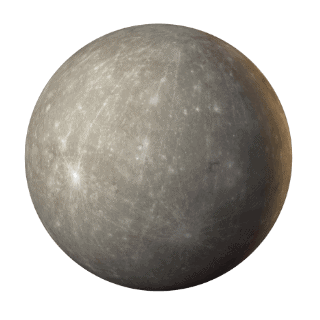
The closest planet to the Sun is Mercury. It’s only 58 million km / 36 million mi or 0.39 AU away from our star, but it isn’t even close when you compare its surface temperature with Venus’s which holds that title as hottest in the Solar System by far!
Mercury is the smallest planet in our solar system. It might be larger than Earth’s moon but smaller than Ganymede, Jupiter’s largest satellite. Mercury has no moons of its own and sits behind a major dust cloud called The Great Dark Spot when viewed from the earth so it can’t always be seen with the naked eye!
Mercury is a terrestrial planet, so it has high density and is primarily composed out of rocks. Its surface resembles Earth’s Moon in that they are both very heavily cratered.
Mercury is the smallest planet in our solar system and has a diameter of 4.879 km / 3.032 mi, but it orbits around the sun every 87 days! It also takes just 59 Earth days for Mercury to complete one day on its surface (which ranges from -173°C at night to 427º C during daylight).
Venus
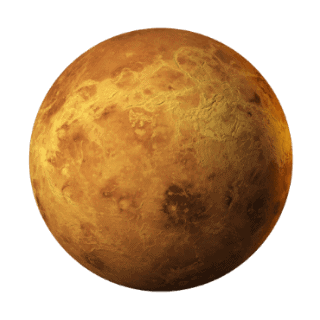
The second closest planet to the Sun is Venus. Since its atmosphere keeps temperatures consistent, this is also the hottest planet in our solar system!
The heat on Venus would easily melt all the water in your body if you were there. It is more than four and a half times hotter than what it takes to evaporate water, but its size has been measured at 12 kilometers!
The planet Venus is the second closest to Earth, but its surface area makes up nearly 90% of that on our homeworld. It takes 225 days for a full orbit and 243 earth-days are needed for one day here; this means that while it’s sunny outside 365 times per year in your city, there may only be around 100 sunrises each year if you lived on Venus.
The thick atmosphere of Venus contains a lot of carbon dioxide and clouds that are made from sulfuric acid. It doesn’t have any moons, but the planet spins in reverse, like on Uranus! Although its composition makes it similar to Earth’s sister world, some other features make it quite different. For example, being surrounded by an extremely hot surface or having volcanoes as active even today.
Earth
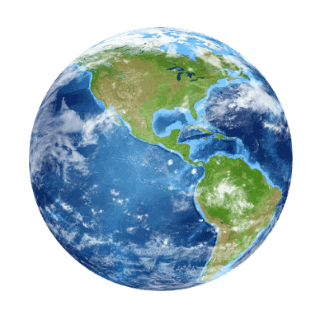
Earth is the third closest planet to the Sun and it’s about 150 million kilometers away. The Earth has one moon that we know of, but there are also a few smaller satellites orbiting around it as well!
The Earth is the biggest terrestrial planet with a diameter of 12.760 km / 7.926 mi and surface temperatures around 14 degrees Celsius, which makes it an ideal place for life to grow!
Earth is a planet with many mysteries, and one of them can be found in its atmosphere. It’s important to know that our Earth has water on 70% of the surface while having oxygen-rich air at 78%.
Mars

Mars is the fourth terrestrial planet and the closest celestial body to the sun. It’s at a distance of 228 million kilometers away from earth or 1.52 AU which makes it hard for us to explore this fascinating world!
The Red Planet has a reddish hue because of the iron oxide on its surface and is very similar to Earth. It also has two moons, Phobos and Deimos.
Mars is Earth’s sister planet, and they have a lot in common. Their rotational periods are the same: one day lasts 24 hours on Mars just like it does here on Earth. We also share similar features – volcanoes, valleys, deserts, and polar ice caps!
The red planet is a place that has long been of interest to humans. With an atmosphere almost 100 times thinner than Earth’s, and surface temperatures averaging around -63 degrees Celsius (-81 °F), Mars comes with some serious challenges to overcome on the way there. However, it still holds many mysteries we want to explore; after all, more than 40 spacecraft have landed or crashed onto its soil since 1960!
Ceres (dwarf)
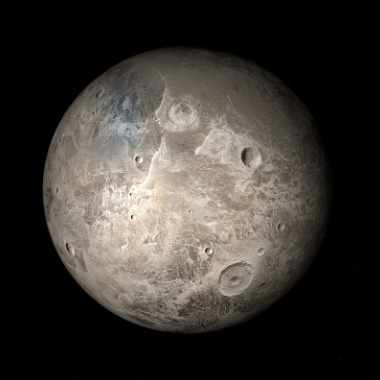
Dwarf planet Ceres is the largest object in its region of space and was only discovered thanks to Giuseppe Piazzi. A probe arrived at it for a visit, making this dwarf planet one of three that have been visited so far!
The asteroid Ceres is so much bigger and different from the rocky neighbors that scientists classified it as a dwarf planet in 2006. Even though only 25% of the total mass lies within Ceres, Pluto still has 14 times more mass than our tiny little celestial friend.
Ceres is the Roman goddess who represents corn and harvests. The word cereal comes from her name, which means she’s been juggling some pretty heavy stuff for centuries!
Jupiter
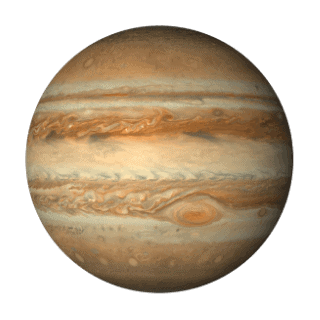
Jupiter is the fifth and most massive planet of our Solar System. It’s 778 million km / 484 million mi or 5.2 AU away from the Sun, 317 times more massive than Earth, 2.5 times larger than all other planets combined, which makes it such a spectacular sight in space!
Jupiter is a gas giant, primarily composed of hydrogen and helium with many other gases. The atmosphere on Jupiter beats any in our solar system for intensity.
The wind speeds on Jupiter are so intense that it is second only to Uranus. With winds reaching 100 m/s, you’re sure to find yourself in a whirlwind of an adventure!
Jupiter is a fascinating planet! Jupiter has 79 moons and the day lasts only 9.8 hours, but it’s also the equivalent of 12 Earth years in length because one year on Jupiter equals twelve years back home. Temperatures range from -148 degrees Celsius to 113-130 K (-225 Fahrenheit) depending on which region you’re at as well; some areas are so hot that they can lead to spontaneous combustion if exposed for too long!
Saturn
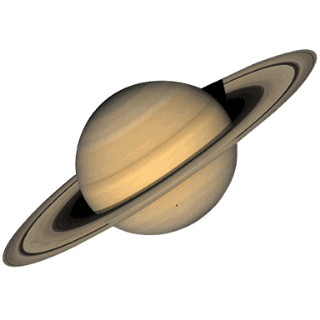
Saturn is a gas giant that orbits the Sun at an incredible distance of 9.5 AU or 1,470 billion km / 886 million mi from Earth! This makes Saturn one of our solar system’s furthest planets and also means it takes about 29 years for light to get here. With such great distances in space between each planet this can mean some pretty long journeys before you reach your destination; but with its seven ring systems around it, how could we not be interested?
Saturn, king of the moons? You betcha! The gas giant has 82 confirmed satellites orbiting it and its atmosphere is made up entirely of hydrogen, helium, and other gases.
There is a lot to know about Saturn. For one, it has been estimated that its diameter ranges from 120-148 thousand kilometers (74.900 miles) and a year on this planet is equivalent to 30 Earth years!
The atmosphere on Saturn is surprisingly cold, with an average temperature of around -178 degrees Celsius. The planet of Jupiter and its moons are probably the most recognizable in our Solar System.
Uranus
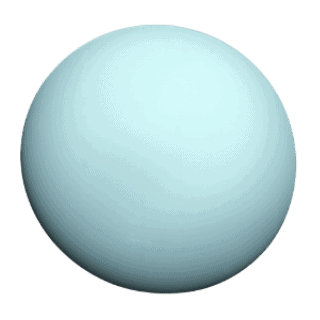
The seventh planet from the sun is Uranus, a giant of ice. It resides just over 2 billion miles away and offers some interesting facts about its make-up, such as methane in frozen form on its surface.
The atmosphere of Uranus is mostly composed of methane, making it a deep blue color. There also happens to be faint rings that surround the planet and they get colder as you go further out into space with temperatures dropping down -224 degrees Celsius!
Uranus is so peculiar that it rotates on its side. It has the shortest day of all planets, only 17 hours long, and like Venus, also orbits in a reverse direction. However, despite this unusual planet’s quirks-it still takes 84 years to rotate around the sun!
Uranus is a mysterious planet with 27 moons and an estimated diameter of 51.118 km / 31.763 mi, which makes it the third-largest in our solar system!
Neptune
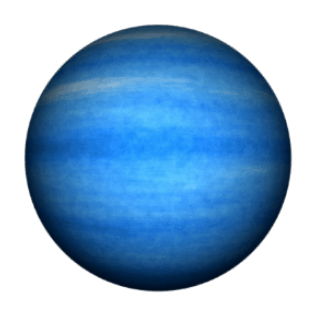
Neptune is the farthest planet from our solar system and at 30.07 AU away, it takes around four light hours (or 16 years) to travel one way! It’s also not just a giant of ice like its sister Uranus but rather an “ice belt” – which means that Neptune has cooler temperatures than either Jupiter or Saturn for example because they are so far into their orbits towards the sun.
Neptune, the planet of winds and rainbows, has a series of faint planetary rings that surround it. This is not even to mention Neptune’s 14 confirmed moons or its ability to reach wind speeds up 2160 kilometers per hour – faster than any other planet!
The planet Neptune has a diameter of around 49.244 km / 30.598 mi, and the longest year is equivalent to 165 earth years long! Time on this blue-green orb lasts an entire day for 16 hours before transitioning back again into night time which also only last 8 hours total in length as well
Neptune is known for its beautiful, almost aqua color. It’s mixed with helium and hydrogen in the same proportions as Earth but Neptune also has traces of other elements like methane which gives it that alluring hue.
The planet was first discovered using math calculations by astronomer John Couch Adams. Who predicted where to find a new body within our solar system before astronomers ever detected it.
Pluto (dwarf)
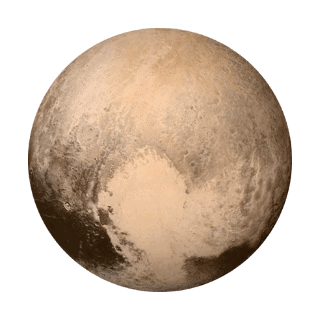
The smaller than Earth’s Moon-Pluto has a heart-shaped glacier that is the size of Texas and Oklahoma. The sky on this fascinating world is blue, it spins moons in orbit around itself just like our moon orbits Earth! There are mountains as high as the Rockies with snow but you won’t believe what color it is snowing: red.
One of NASA’s most important missions was the New Horizons mission. The spacecraft made its historic flight through the Pluto system on July 14, 2015 and provided a more detailed view of space than ever before by giving us close-up images and other data that has transformed our understanding of these mysterious worlds in outer frontier regions outside Earth’s solar system
Pluto has always been a mysterious object for scientists, but recent findings have finally solved the ‘mystery’ of its frozen surface. Scientists were left with many questions after that first flyby decades ago – is it just rocks? Is the ice really enough to make an entire planet and everything on it? Recently, researchers found evidence showing what could be liquid water beneath Pluto’s icy crust!
Haumea (dwarf)
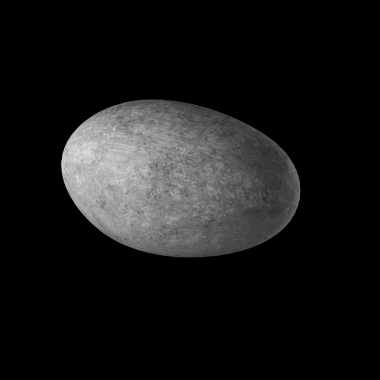
Haumea is one of the fastest rotating large objects in our solar system. Its fast spin distorts Haumea’s shape, making this dwarf planet look like a football and earning it the nickname “Santa”.
The search for Haumea’s discovery location is a contentious, drawn-out process. Two teams of astronomers claim credit for finding it based on observations from 2003 and 2004 respectively but the International Astronomical Union doesn’t list an official discoverer.
Haumea is about 1/14 the radius of Earth! Think how small it would be if we were to make a comparison with something that you can relate to. Such as making an apple model or using nickel and seeing what happens when Haumea shrinks in size.
The planet Haumea is a strange thing. It takes 285 Earth years to make one trip around the sun, and as it orbits we see that its rotation completes every 4 hours!
Makemake (dwarf)

Makemake is a small, dwarf planet located in the Kuiper Belt. It takes about 305 years for this celestial body to rotate around our local star and it’s one of the brightest objects that can be seen from Earth!
The discovery of the dwarf planet Makemake is a very recent one, only being found in 2005. The international team that discovered it consisted of Michael E Brown and Chad Trujillo from Caltech; David Rabinowitz from Yale University; and Meg Schwamb as part of her doctoral dissertation at California Institute for Technology.
Makemake is an amazing planet in our solar system. It has a radius of approximately 444 miles (715 kilometers). That’s about 1/9 the size of Earth, and it would be like comparing a nickel to just one tiny mustard seed if we were as big as this great world!
Makemake takes 305 Earth years to make one trip around the sun. Its orbit is completed every 22 and a half hours, making its day length similar to that of our planet.
Eris (dwarf)

Eris, one of the largest known dwarf planets in our solar system is three times farther from the Sun than Pluto. This sparked a debate among scientists which led to an official decision by 2006’s International Astronomical Union. About how they would classify both Eris and other similar objects; as Dwarf Planets.
The discovery of Eris was announced in 2003 and made by three astronomers at the Palomar Observatory.
Eris is tiny in comparison to Earth, and its radius of 722 miles (1,163 kilometers) only makes up about 1/5th the size. In fact, if you were able to shrink down our planet’s circumference by 20% or so Eris would be roughly equivalent in size to the popcorn kernel!
Eris is a giant, dwarf planet that can take up to 557 Earth years just for one trip around the Sun. Not only does Eris orbit well out of the plane containing all other planets in our solar system. But its path extends beyond what we call Kuiper Belt – an icy debris field deep within space past Neptune’s orbit.



